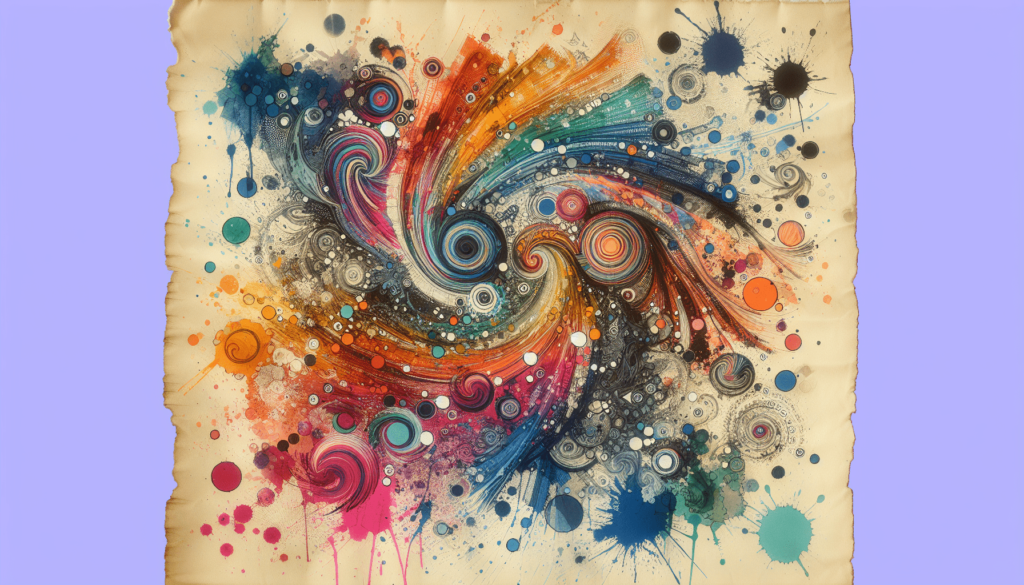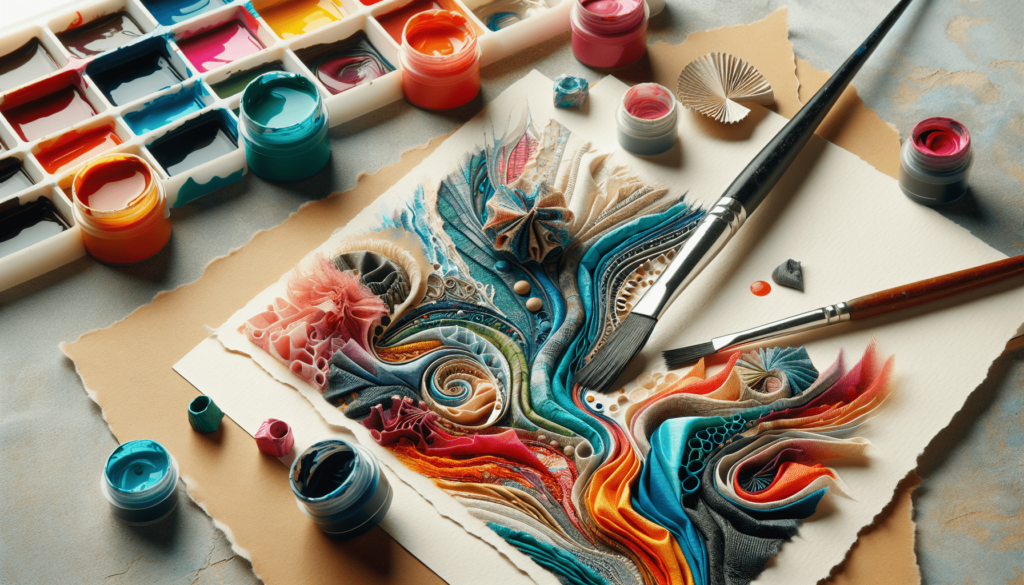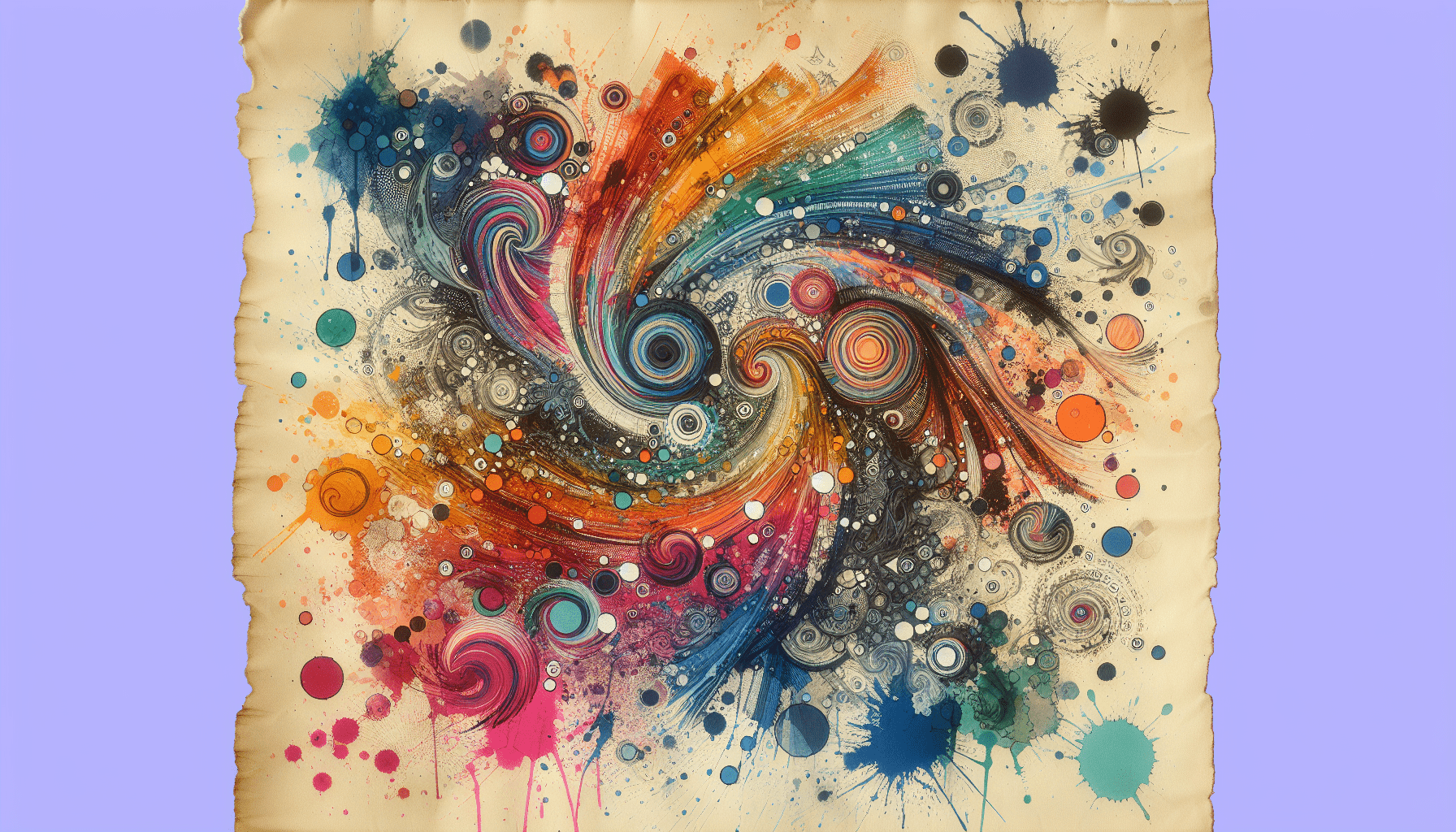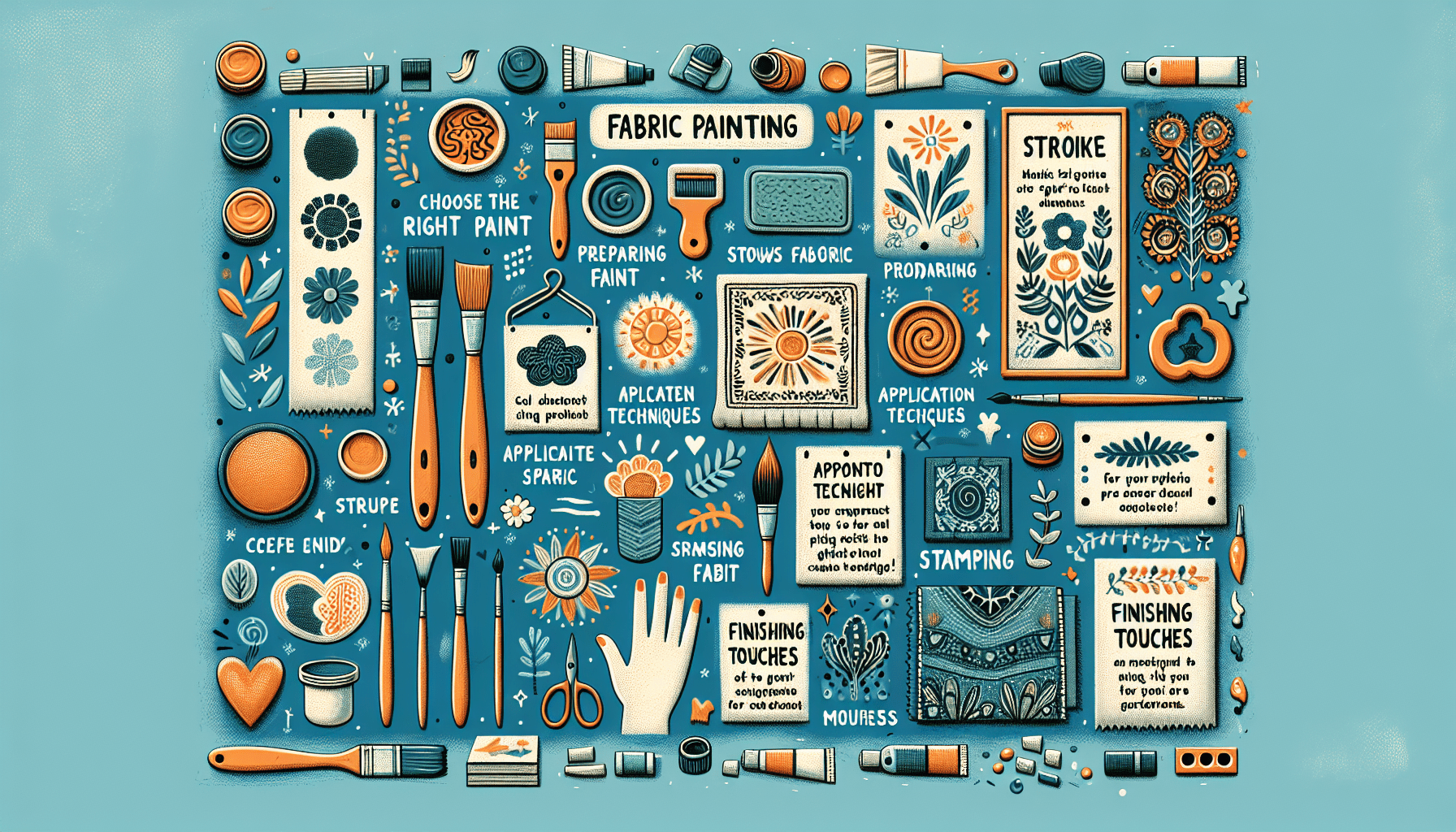Fabric paint is a versatile medium that allows artists and crafters to add vibrant colors and unique designs to their creations. However, there is often confusion about whether fabric paint can be used on paper. In this article, we will explore the possibilities and limitations of using fabric paint on paper, providing you with a clear understanding of how to achieve stunning results on this alternate canvas.

Introduction
Explanation of the topic
Fabric paint is a specialized type of paint that is designed to adhere to fabric surfaces. It allows individuals to add vibrant colors and designs to various fabrics, such as clothing, accessories, and home decor items. However, the question arises whether fabric paint can be used on paper as well. In this article, we will explore the characteristics of fabric paint, its applications, and whether it can be utilized on paper surfaces.
Purpose of the article
The purpose of this article is to provide a comprehensive understanding of fabric paint, its differences from other types of paints, and whether it can be effectively used on paper. By examining the advantages and disadvantages of using fabric paint on paper, readers will be able to make informed decisions about utilizing this medium for their artistic endeavors.
What is Fabric Paint?
Definition and characteristics of fabric paint
Fabric paint is a type of paint specifically formulated to bond with textile materials. It possesses unique properties that make it suitable for application on fabric surfaces. Unlike other types of paint, fabric paint is designed to withstand washing and drying without fading or peeling off. It offers strong adhesion to fabric fibers, ensuring that the painted designs remain intact even after multiple washes.
Fabric paint also possesses a slightly thicker consistency compared to other paints, allowing for better coverage on textured fabric surfaces. Additionally, it is often formulated to be transparent, allowing for layering and creating various effects on fabric.
Types of fabric paint
There are several types of fabric paint available on the market, each offering its own unique features. Some common types include:
-
Acrylic fabric paint: This type of fabric paint is water-based and offers excellent adhesion to fabric. It is available in a wide range of colors and is known for its durability and flexibility. Acrylic fabric paint can be heat-set for improved washability.
-
Puff fabric paint: Puff fabric paint is formulated to create a raised, three-dimensional effect on fabric. It comes in squeeze bottles and expands when heated, resulting in a textured look. Puff fabric paint can add depth and dimension to fabric designs.
-
Glitter fabric paint: As the name suggests, this type of fabric paint contains glitter particles, adding sparkle and shimmer to fabric projects. It can be used on its own or layered over other fabric paint colors to create a dazzling effect.
Applications of fabric paint
Fabric paint has a wide range of applications, primarily in the realm of textile art and customization. Some common applications of fabric paint include:
-
Personalized clothing: Fabric paint allows individuals to create unique designs on clothing items, such as t-shirts, hoodies, and jeans. This enables personal expression and customization of wardrobe pieces.
-
Home decor: Fabric paint can be used to add designs and patterns to various home decor items, such as curtains, cushion covers, and tablecloths. This allows for a cohesive aesthetic and personalized touch in interior design.
-
Craft projects: Fabric paint is often utilized in crafting projects, such as fabric-based accessories, tote bags, and quilts. Its versatility and ability to adhere to fabric make it a popular choice for creative endeavors.
Differences Between Fabric Paint and Other Paints
Comparison with acrylic paint
Fabric paint and acrylic paint share some similarities, as they are both water-based and offer excellent adhesion to surfaces. However, there are key differences between the two:
-
Flexibility: Fabric paint is specifically formulated to remain flexible on fabric surfaces, allowing the painted designs to move and stretch with the fabric. On the other hand, acrylic paint can dry to a rigid finish, making it less suitable for fabric.
-
Washability: Fabric paint is designed to withstand washing and drying without fading or peeling off. Acrylic paint, unless specifically designed for fabric, may not hold up well to repeated washing and may require additional sealants for durability.
-
Transparency: Fabric paint is often formulated to be transparent, allowing for layering and creating various effects on fabric. Acrylic paint, on the other hand, comes in a range of opacities, from transparent to opaque, allowing for different techniques and effects on various surfaces.
Comparison with watercolor paint
Watercolor paint and fabric paint are fundamentally different in composition and purpose. While watercolor paint is primarily used on paper and other porous surfaces, fabric paint is formulated specifically for textile materials. Here are some distinctions between the two:
-
Absorption: Watercolor paint is designed to be absorbed into paper fibers, allowing for transparent and subtle washes of color. Fabric paint is not absorbed by paper in the same way and may result in different effects.
-
Adhesion: Fabric paint is formulated to adhere to fabric fibers, ensuring long-term durability even after washing. Watercolor paint is not designed for adhesion on fabric and may eventually fade or wash away.
-
Application techniques: Watercolor paint is typically applied with brushes or watercolor pencils, utilizing techniques such as washes, wet-on-wet, and layering. Fabric paint, on the other hand, is often applied with brushes, sponges, or stencils, and can be used for more structured designs and details on fabric.
Comparison with oil paint
Similar to watercolor paint, oil paint differs from fabric paint in composition and application. While oil paint is known for its slow drying time and blending capabilities, fabric paint offers distinct advantages for textile works:
-
Drying time: Fabric paint is specifically formulated for quick drying on fabric surfaces, allowing for immediate use and handling. Oil paint, due to its oil-based nature, can take days or even weeks to fully dry.
-
Adhesion: Fabric paint is designed to adhere to fabric fibers, providing long-lasting durability. Oil paint, although it can be used on various surfaces, may require additional primers or sealants for proper adhesion on fabric.
-
Cleanup and toxicity: Fabric paint is water-based and can be easily cleaned up with water. Oil paint, on the other hand, requires the use of solvents such as turpentine or mineral spirits for cleanup, making it more toxic and potentially hazardous to use.
Can Fabric Paint Be Used on Paper?
Explanation of the question
The question of whether fabric paint can be used on paper arises due to the similarities in application techniques and desired effects. While fabric paint is primarily formulated for use on fabric, some artists may be curious about its potential on paper surfaces.
Factors to consider
When considering the use of fabric paint on paper, several factors need to be taken into account:
-
Absorption: Paper is a porous surface that absorbs liquid substances, such as paint. Fabric paint is designed to bond with fabric fibers and may not be fully absorbed by paper, resulting in different effects.
-
Drying time: Fabric paint is formulated for quick drying on fabric surfaces. The drying time of fabric paint on paper may differ due to the different properties of the two materials.
-
Longevity: Fabric paint is designed to withstand washing and drying without fading or peeling off fabric. The longevity of fabric paint on paper may vary, as it is not specifically formulated for that surface.
Discussion on feasibility
While fabric paint can technically be used on paper, it may not yield the desired results or longevity. The characteristics of fabric paint, such as its thickness, opacity, and adhesion, may not translate well to the absorbent nature of paper. Additionally, the poor absorption of fabric paint by paper may result in issues such as bleeding and smudging.

Pros of Using Fabric Paint on Paper
Versatility of fabric paint
One advantage of using fabric paint on paper is its versatility. Fabric paint offers a wide range of colors, effects, and applications, allowing for diverse creative possibilities. It can be used to create bold and vibrant designs, as well as subtle and layered effects on paper surfaces.
Vibrant and opaque colors
Fabric paint is known for its vibrant and opaque colors. This characteristic can be advantageous when using it on paper, as it allows for bold and impactful designs. The richness and vibrancy of fabric paint can bring life to paper artworks, enhancing the overall visual appeal.
Variety of effects
Fabric paint offers a variety of effects that can be utilized when working on paper. These include techniques such as stenciling, stamping, and block printing. The ability to create texture, dimension, and intricate details can enhance the artistic possibilities when using fabric paint on paper.
Cons of Using Fabric Paint on Paper
Poor absorption by paper
One of the main challenges when using fabric paint on paper is its poor absorption. Fabric paint is designed to adhere to fabric fibers, and as a result, it may sit on the surface of paper rather than being absorbed. This can affect the drying time and overall appearance of the paint on paper.
Possible bleeding and smudging
Due to the poor absorption of fabric paint by paper, there is a higher risk of bleeding and smudging. The excess paint may spread beyond the intended area, resulting in blurry or distorted designs. This can be particularly problematic when working with intricate details or delicate artworks.
Potential damage to the paper
Fabric paint, being formulated for fabric, may contain additives or chemicals that could potentially damage paper fibers. Prolonged contact or excessive layers of fabric paint on paper may cause the paper to become brittle, discolored, or deteriorated over time. It is important to consider the longevity and preservation of paper artworks when using fabric paint.
Tips for Using Fabric Paint on Paper
Choose the right paper
When using fabric paint on paper, it is crucial to select the appropriate type of paper. Look for paper with a higher weight or thickness, as this can help minimize issues such as bleeding and smudging. Watercolor paper or mixed media paper may be suitable options for working with fabric paint on paper.
Prepare the surface
Before applying fabric paint to paper, it is recommended to prepare the surface. This can be done by priming the paper with a layer of gesso or applying a thin coat of acrylic medium. These preparations can help improve the adhesion and durability of fabric paint on paper.
Use appropriate techniques
When using fabric paint on paper, it is important to adapt and experiment with different techniques. Consider using brushes, sponges, or stencils to apply the paint to achieve desired effects and minimize the risk of bleeding or smudging. Practice on a small test piece of paper before working on a larger artwork to familiarize yourself with the techniques and potential outcomes.
Alternative Paints for Paper
Suggestions for suitable paint types
If fabric paint is not the ideal choice for paper, there are alternative paint types that can be explored. Some suitable options for paper include:
-
Watercolor paint: Watercolor paint is specifically designed for use on paper surfaces. It offers transparency, fluidity, and the ability to create soft, subtle washes of color, making it a popular choice for traditional and contemporary artworks on paper.
-
Acrylic paint: Acrylic paint is a versatile medium that can be used on a variety of surfaces, including paper. It offers a wide range of colors, opacities, and textures, allowing for diverse artistic expressions. Acrylic paint dries quickly and can be layered to create depth and dimension on paper.
-
Gouache paint: Gouache paint is similar to watercolor paint but offers more opacity. It can be used on paper to achieve vibrant and opaque colors, as well as detailed and precise designs. Gouache paint can be reactivated with water, allowing for blending and reworking.
Comparisons with fabric paint
When comparing alternative paints with fabric paint, several factors need to be considered, such as:
-
Adhesion: Fabric paint is specifically formulated for strong adhesion to fabric fibers. Alternative paint types may require additional primers or sealants for proper adhesion on paper.
-
Appearance: Fabric paint offers vibrant and opaque colors, which can be advantageous for certain paper artworks. Alternative paints, such as watercolor or gouache, may offer transparency or softer washes of color, resulting in different visual effects.
-
Durability and longevity: Fabric paint is designed to withstand washing and drying on fabric surfaces. Alternative paints may not possess the same durability on paper and may require additional precautions, such as varnishing or framing under glass, for long-term preservation.
Creative Ideas for Using Fabric Paint on Paper
Customizing greeting cards
Fabric paint can be utilized to customize greeting cards, adding personalized designs and messages. Use fabric paint to create vibrant illustrations, patterns, or hand-lettered messages on the cardstock. The versatility of fabric paint allows for a wide range of creative possibilities, enabling unique and memorable greeting cards.
Designing wall art
Create unique wall art by using fabric paint on paper. Paint abstract or representational designs on large-scale paper, using the vibrant and opaque colors of fabric paint to make a bold statement. The variety of effects achievable with fabric paint, such as texture and dimension, can enhance the visual impact of the wall art.
Creating mixed media projects
Combine fabric paint with other art mediums to create mixed media projects on paper. Incorporate fabric scraps, threads, and other textile materials into the artwork, enhancing the tactile quality of the piece. Experiment with different techniques, such as collage, layering, and stitching, to create visually dynamic and texturally rich mixed media artworks.
Conclusion
Summary of key points
Fabric paint is a specialized paint designed for fabric surfaces, offering vibrant colors, durability, and versatility. While fabric paint can technically be used on paper, it may not yield the desired results due to poor absorption and potential issues with bleeding, smudging, and damage to the paper. However, fabric paint offers unique advantages such as vibrant and opaque colors, versatility, and variety of effects. When working with fabric paint on paper, it is important to choose the right paper, prepare the surface, and use appropriate techniques to minimize potential challenges.
Closing thoughts
Using fabric paint on paper can be an experimental and creative endeavor for artists willing to explore the possibilities. While fabric paint may not be the most suitable choice for traditional paper artworks, its unique characteristics and vibrant colors can offer distinct advantages in certain projects. Whether customizing greeting cards, designing wall art, or creating mixed media projects, fabric paint can add a unique touch to paper-based artworks when used with consideration and technique.



